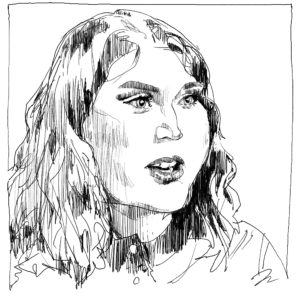Don’t let the cultural-appropriation panic kill fashion

Another day, another cry of cultural appropriation. This time, it’s fashion powerhouse Vogue magazine that is on the receiving end of the culture police’s outrage, due to a photoshoot which featured white, American supermodel Karlie Kloss dressed as a geisha, complete with a black wig and white make-up.
Critics claim that Kloss has participated in an act of racism, that Vogue is guilty of ‘yellow-face’ for casting a white model for a Japanese-themed shoot. Kloss has since apologised, tweeting, ‘these images appropriate a culture that is not my own and I am truly sorry for participating in a shoot that was not culturally sensitive’.
High fashion is ostensibly about being different and pushing boundaries. Vogue’s willingness to take risks and spark trends is what has made it a household name. The idea that a shoot should be constrained to whatever cultural heritage a model was born into undermines creative exploration. In fact, in many ways, models’ backgrounds are irrelevant – their job is to let the clothes take centre stage and perform the character assigned to that shoot.
However Vogue didn’t do itself any favours. The magazine issue in question was based around the theme of diversity. And by making a fuss about the fact that it was trying to be diverse, Vogue invited ridicule when it picked a white American for a geisha shoot. Once you open the can of worms that is diversity politics upsetting one identity group or another is inevitable. Vogue was bitten for trying to play the PC game, and doing it badly.
Vogue is hardly on a level with Picasso, but fashion remains a respected artform. To censor and limit its imaginative power is to do art a disservice. In the October 1966 edition of US Vogue, German model Veruschka von Lehndorff went to Japan, dressed in furs, and posed as ‘the girl’. She wore a geisha mask and trekked up mountains in Japanese-themed outfits. The shoot made fashion history, and is a beautiful example of cultural fusion.
By pointing the finger and crying ‘cultural appropriation’ at designers who wish to mix cultural influences, critics narrow the scope for artistic exploration in fashion. The mixing of cultures and the appreciation of other styles and traditions is the lifeblood of creativity. As Coco Chanel reportedly once said, ‘In order to be irreplaceable one must always be different’. For a truly cosmopolitan culture to flourish, we must ditch this panic about cultural appropriation.
Ella Whelan is assistant editor at spiked. Follow her on Twitter: @Ella_M_Whelan
To enquire about republishing spiked’s content, a right to reply or to request a correction, please contact the managing editor, Viv Regan.









Comments
Want to join the conversation?
Only spiked supporters and patrons, who donate regularly to us, can comment on our articles.